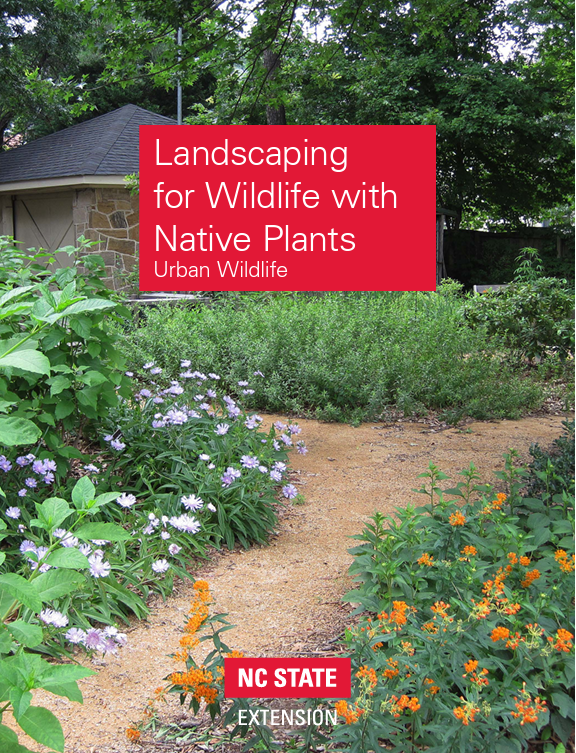Landscaping for Wildlife With Native Plants
go.ncsu.edu/readext?958715
en Español / em Português
El inglés es el idioma de control de esta página. En la medida en que haya algún conflicto entre la traducción al inglés y la traducción, el inglés prevalece.
Al hacer clic en el enlace de traducción se activa un servicio de traducción gratuito para convertir la página al español. Al igual que con cualquier traducción por Internet, la conversión no es sensible al contexto y puede que no traduzca el texto en su significado original. NC State Extension no garantiza la exactitud del texto traducido. Por favor, tenga en cuenta que algunas aplicaciones y/o servicios pueden no funcionar como se espera cuando se traducen.
Português
Inglês é o idioma de controle desta página. Na medida que haja algum conflito entre o texto original em Inglês e a tradução, o Inglês prevalece.
Ao clicar no link de tradução, um serviço gratuito de tradução será ativado para converter a página para o Português. Como em qualquer tradução pela internet, a conversão não é sensivel ao contexto e pode não ocorrer a tradução para o significado orginal. O serviço de Extensão da Carolina do Norte (NC State Extension) não garante a exatidão do texto traduzido. Por favor, observe que algumas funções ou serviços podem não funcionar como esperado após a tradução.
English
English is the controlling language of this page. To the extent there is any conflict between the English text and the translation, English controls.
Clicking on the translation link activates a free translation service to convert the page to Spanish. As with any Internet translation, the conversion is not context-sensitive and may not translate the text to its original meaning. NC State Extension does not guarantee the accuracy of the translated text. Please note that some applications and/or services may not function as expected when translated.
Collapse ▲Landscaping for Wildlife with Native Plants
Climate change and significant weather events highlight the need for plants that are more resilient to the conditions in our state.
North Carolina’s native plants provide well-adapted food and cover for North Carolina’s native animals, and a well-planned landscape of native plants can help you attract a diversity of wildlife to your property.
Plants native to North Carolina also are well-suited to the state’s soils and climate, and they require relatively little upkeep once established on an appropriate site.
However, the spread of non-native plants poses a threat to native plants and animals of North Carolina.
This publication describes the problems associated with some non-native, invasive plants and presents a detailed list of native plants that may be used in place of these foreign ornamentals to attract wildlife to your property.
Reversing the Trend
You can help stop the non-native plant invasion by using and nurturing native plants around your home and on your property. Native plants generally grow well and require less care than non-native species when grown on the proper soils under the right environmental conditions. Additionally, North Carolina’s native wildlife has become adapted to using native plants over thousands of years. Therefore, native plants meet the needs, including food and cover, of North Carolina’s native wildlife without causing long-term damage to local plant communities.
In 2022, NC State Forestry Extension in partnership with the NC Forestry Service, the Museum of Natural Sciences, NC Botanical Garden, and Duke University’s School of Environment published this pamphlet to help home and landowners select alternatives in favor of native landscaping plant to encourage wildlife.
It provides some recommendations on how to manage existing vegetation and suggest alternatives.
There are multiple tables which indicate NC native plant species selection. If you prefer mostly native plants for your garden, this Extension publication can assist you to add an additional native consideration layer when selecting plants for your garden.
Additionally, this publication is free to download from the internet.
Make sure you browse the resources at the end for links to other similar publications available for download for free.
As a horticulture extension agent, I value a table of native plants in one location that break out alternative suggestions of native plants for gardens in close proximity to home dwellings.





